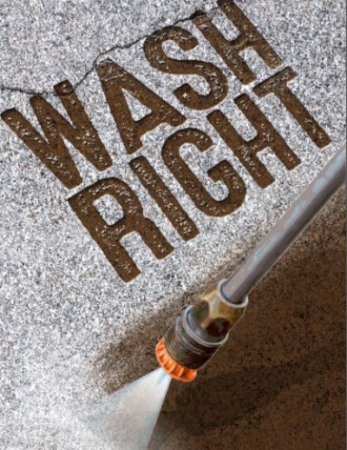Power Washing
STORMWATER is not treated,
and carries pollution from streets and your property
directly to the nearest creek, lake or river.
Pressure wash waste water contains pollutants such
as metals, oils, paint, cleaners, and dirt that all harm
fish and other aquatic life.
• Water must be diverted to a sink, lawn, or landscaping.
• Wash water cannot enter storm drains and ditches.*
BEFORE WASHING
• Absorb oil spots with kitty litter
(or other absorbent) and sweep it up.
• Sweep up trash, debris, and dirt.
• Plan a method for disposing of your waste water.
• Call us for help. Learn tips to divert or block the
waste water from storm drains.
WHILE WASHING
• Use less water: the more you use the more you move.
• Avoid hazardous cleaners (such as those containing
bleach, hydrofluoric acid, muriatic acid, sodium
hydroxide, etc.).
• Water without cleaners may be discharged to a lawn
or landscaped area where the water can soak into the
ground without running off.
AFTER WASHING
• Dump waste water into a utility sink
or private sewer cleanout.
REMEMBER
• Never dump waste water on streets, pavement,
into storm drains or ditches.
• Never pressure wash lead-based paint.
• Protect your septic by not dumping pressure
wash waste water into your system.



